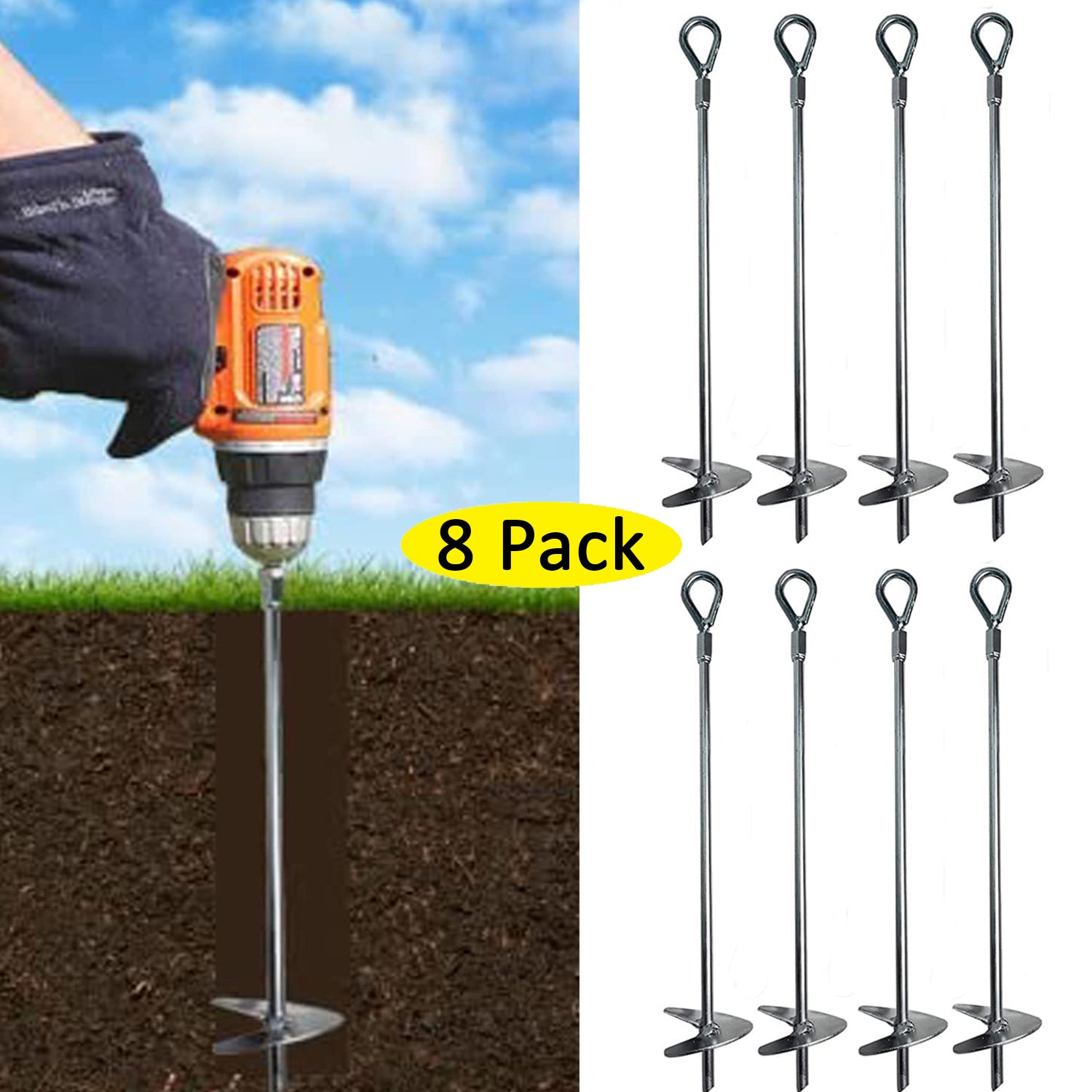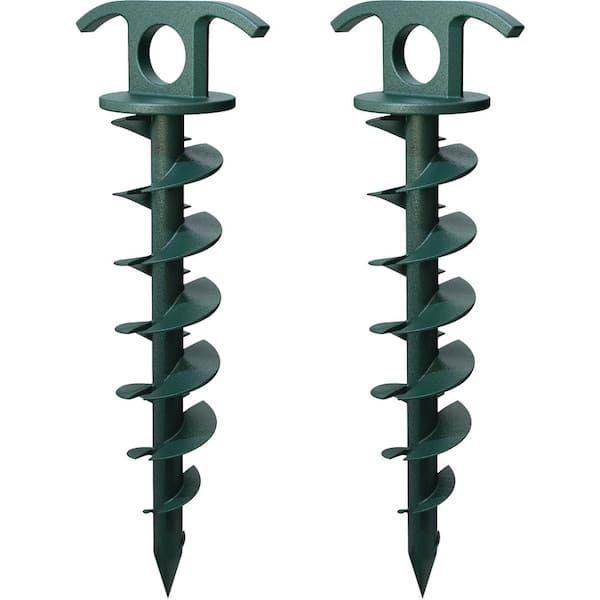Ways to Pick the Best Ground Anchor for Industrial Use
Ways to Pick the Best Ground Anchor for Industrial Use
Blog Article
Explore the Various Sorts Of Ground Anchor for Your Next Job
When starting a building or landscape design project, recognizing the different sorts of ground supports readily available is critical to making sure both stability and durability (Ground Anchor). From auger anchors, which master varied soil conditions, to stake supports developed for short-lived installments, the choices are countless. Additionally, concrete and screw supports present special advantages in particular situations, while deadman anchors are customized for applications requiring resistance to lateral forces. The selection of an ideal anchor type can significantly affect the overall success of your task, prompting further exploration into their corresponding benefits and applications.

Auger Anchors
Auger supports are a prominent option in different construction and landscape design projects because of their unique layout and efficient securing abilities. These supports include a helical screw-like shaft that is driven into the ground, permitting a stable and safe and secure hold. The spiral style promotes very easy setup and makes best use of resistance versus side forces, making auger supports specifically efficient in applications such as secure fencing, momentary structures, and disintegration control.
The installment procedure of auger anchors is reasonably simple. Auger anchors can be easily eliminated and reused, which includes to their cost-effectiveness and sustainability.
Among the substantial benefits of auger supports is their capability to disperse lots uniformly throughout the surrounding soil, minimizing the risk of soil disruption and decreasing ecological impact. Furthermore, they are less susceptible to heaving or loosening over time compared to standard securing techniques. Auger supports are an excellent option for jobs requiring durable and trustworthy anchoring services.

Risk Anchors
When it pertains to protecting frameworks in a variety of outdoor applications, stake anchors offer a simple and trustworthy remedy. These supports are normally created from durable products such as steel or aluminum, created to withstand environmental tensions while providing optimum security. Their basic style allows for quick installment, making them an excellent choice for long-term or short-lived anchoring needs.
Risk anchors are particularly useful in safeguarding camping tents, canopies, and other light-weight structures against wind and weather. They function by being driven into the ground at an angle, creating a solid hold that resists pull-out forces - Ground Anchor. The effectiveness of stake supports depends upon a number of elements, consisting of dirt kind, dampness content, and the angle of installment
For added safety and security, several stake supports feature add-on factors for bands or ropes, permitting stress adjustments as essential. In applications such as landscaping or construction, they can effectively support devices or frameworks on irregular terrain. In general, risk supports offer a functional and economical service for protecting numerous outdoor installments, making them a preferred selection for professionals and do it yourself enthusiasts alike.
Concrete Anchors
Concrete supports offer a durable service for securing structures to concrete surface areas, ensuring stability and security in numerous applications. These anchors are important for tasks ranging from residential buildings to massive commercial installments. They are available in various kinds, consisting of growth anchors, sticky supports, and undercut anchors, each designed for details lots requirements and environmental problems.
When mounted,Development supports rely on mechanical devices to hold the concrete. They are perfect for tool to durable applications. Adhesive supports use high-strength epoxy or material to bond the anchor to the concrete, supplying remarkable load-bearing capabilities, specifically in broken concrete situations. Undercut supports create an one-of-a-kind shape within the concrete, supplying phenomenal holding power, especially in applications where tensile loads prevail.
Choosing the suitable concrete support entails taking into consideration factors such as the weight of the load, the condition of the concrete, and environmental problems. Proper installation techniques are vital to make certain optimum efficiency and dependability. When performed properly, concrete anchors significantly boost the architectural honesty of different jobs, making them vital in modern-day building and construction methods. Comprehending the certain demands of your project will certainly assist in selecting the right type of concrete support for the task.
Screw Anchors

Screw supports are a flexible fastening service that can be successfully utilized in a range of applications where standard concrete anchors may not suffice. These anchors contain a helical layout explanation that permits them to be quickly driven right into the ground, making them excellent for usage in dirt and other substrates. Their one-of-a-kind structure offers outstanding holding power and resistance to pull-out forces, making them appropriate for countless jobs, from landscape design to structural assistance.
One of the primary advantages of screw supports is their ease of setup. They need minimal tools and can usually be mounted without the requirement for excavation, which saves both time and labor costs. Additionally, screw anchors can be gotten rid of and recycled, providing a lasting solution for short-term applications.
Screw supports are particularly beneficial in locations where soil conditions are challenging, such as loosened or sandy soils. Their ability to be set up at varying depths enables personalization based upon certain project requirements. In general, screw anchors give a efficient and trusted securing method, making them an exceptional option for engineers and contractors looking for efficient solutions for their projects.
Deadman Anchors
Deadman supports act as a durable remedy for maintaining frameworks in challenging conditions, particularly where typical securing methods may fall brief. These supports include big, hefty objects buried underground, which develop resistance against lateral pressures. The design typically entails a straight element, such as a block of concrete or a steel plate, hidden in the soil, to which cables or straps are connected.
The efficiency of deadman anchors depends on their capability to distribute loads over a bigger area, reducing the danger of failure in unstable soil problems. They are particularly beneficial in applications such as preserving walls, temporary frameworks, and slope stabilization, where soil motion can compromise the stability of the framework.
Installation of deadman anchors needs mindful planning to ensure they are placed at the proper depth and orientation, optimizing their load-bearing capacity. While they may require even more labor and product than lightweight supports, their reliability in damaging conditions makes them invaluable for long-lasting projects. Deadman anchors are versatile and can be adapted to different applications, making them a go-to choice for designers encountering one-of-a-kind difficulties in their tasks.
Conclusion
In recap, web link selecting the suitable type of ground anchor is crucial for making sure security and security in various jobs. Auger supports master diverse soil problems, while risk supports suit short-lived applications. For concrete surfaces, growth and glue supports supply reputable alternatives, and screw supports provide adaptability in difficult terrains. Deadman supports are especially effective in withstanding lateral pressures for maintaining walls. Cautious consideration of these options will improve task end results and structural integrity.
Additionally, concrete and screw anchors existing distinct benefits in details scenarios, while deadman supports are customized for applications needing resistance to side forces - Ground Anchor.Auger supports are a preferred option in numerous building and landscape design projects due to their unique style and reliable securing abilities. They come in different types, consisting of growth supports, adhesive supports, and undercut supports, each created for certain tons demands and environmental conditions
Adhesive anchors use high-strength epoxy or resin to bond my blog the support to the concrete, offering remarkable load-bearing capacities, specifically in cracked concrete circumstances. On the whole, screw supports give a reliable and efficient securing method, making them an outstanding selection for contractors and engineers looking for effective remedies for their projects.
Report this page